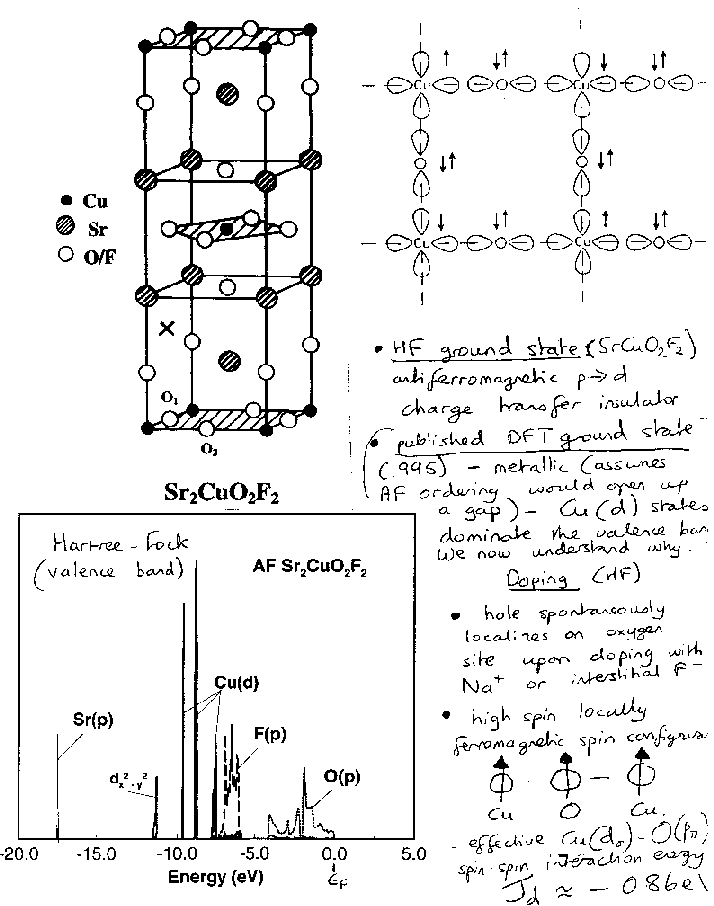27. NaxSr2-xCuO2F2 (!) |



|
As the final step on our tour, let's look at NaxSr2-xCuO2F2. This is a high Tc superconductor above 46 K - the dopants are Na ions substituing for Sr. You can get the same result by doping it with excess fluorine which sits at the point labelled x in the above crystal structure. Now here [ABOVE BOTTOM LEFT] is the total density of states for the occupied bands - I haven't bothered to show the spin polarization (these pictures are from calculations done by my old Ph.D. supervisor Neil Allan and his friend Bill Mackrodt). You can see it's a charge transfer insulator, with a valence band that is essentially oxygen p with the Cu d states confined to narrow bands below the fluorine p band. I should mention that there was a density functional calculation published on this material in 1995. Predictably it turned out to have a metallic ground state with the valence band made up almost entirely of Cu d states. In his discussion the author says "if only I could converge an antiferromagnetic solution then I believe that the spin ordering would open a gap". I hope that you can now see that the whole basis of such an argument is misleading. So what happens when we dope this in HF? The hole spontaneously localizes itself on an oxygen site. Important question: what happens to the magnetism? Normally the CuO2 plane looks like this [ABOVE TOP RIGHT]. You can see the Cu-O-Cu superexchange contacts. But now we're removing one of these little arrows and getting a hole on this oxygen site. By flipping the spins in various configurations, we can show that the lowest energy magnetic state happens to be a high spin locally ferromagnetic configuration, like this [ABOVE BOTTOM RIGHT]. So the hole reverses the sign of the magnetic interaction between its adjacent coppers and the spin on the oxygen likes to point in the same direction. You can estimate an effective spin-spin interaction energy between copper and oxygen spins of 0.86 eV which is several orders of magnitude larger than the superexchange couping constant in the undoped material. The calculations predict that the antiferromagnetic ordering in the CuO2 plane would be destroyed at about 50% doping. This locally ferromagnetic region is something like a spin polaron. One of the theories about high Tc is that pairs of these objects attract each other, form bosons and these are the objects which condense to the form the superconducting state. Obviously they're not going to do so in a calculation like this so we'd better leave it there. End of tour. Let's start drawing conclusions. |


